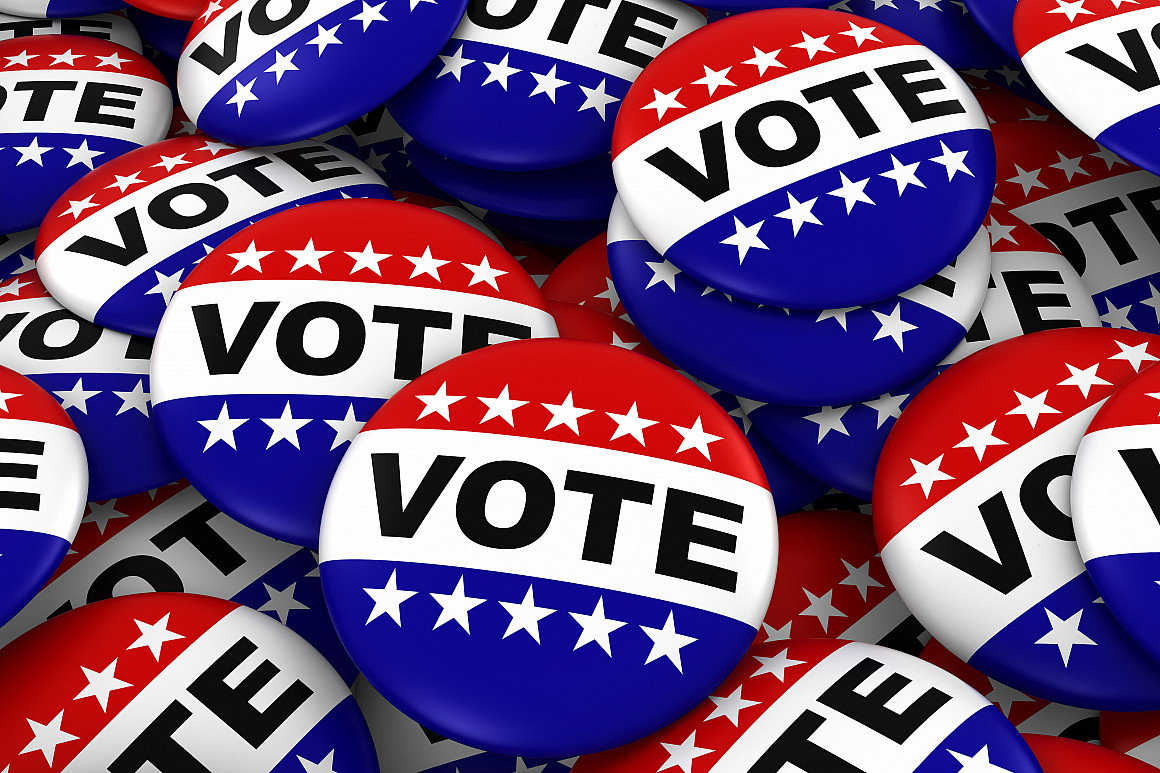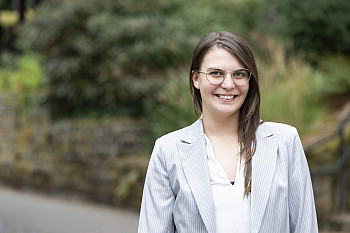main content Working Together to Improve L&C’s Voter Turnout
Lewis & Clark is taking part in the ALL IN Campus Democracy Challenge, working to improve civic engagement and achieve at least 80 percent voter turnout in the upcoming election.
Civic Engagement

Update: Lewis & Clark has been recognized as one of the “Most Engaged Campuses for College Student Voting in 2024” by the ALL IN Campus Democracy Challenge. This national distinction highlights the college’s commitment to fostering nonpartisan civic engagement and empowering students to participate in the democratic process.
For the fourth consecutive election year, Lewis & Clark is taking part in the national ALL IN Campus Democracy Challenge, working to achieve at least 80 percent voter turnout among undergraduates through the execution of a detailed action plan. Meeting the ambitious goal is a group effort, with student groups, campus offices, academic departments, and off-campus partners working together to demonstrate Lewis & Clark’s institutional commitment to democratic engagement.

The action plan, which will extend until 2026, was developed through months of close collaboration between student and staff representatives at the Center for Social Change and Community Involvement and the Palatine Hill Student Voters Club. As the academic year kicks off, numerous allies—College Athletics, Campus Living, and Mail Services, to name a few—are playing a pivotal role in carrying out ALL IN’s mission: making participating in local, state, and federal elections the social norm among students.

Credit: Nina Johnson “The commitment to getting our voter registration and voting numbers up has always been there, but this year we have the resources to execute on it,” says Andrea Salyer, the center’s director. “We’ve brought together these broad coalitions all across campus to ask, ‘How do we want to work toward our goals this year?’ That’s been amazing.”
The ALL IN collaborators have developed wide-ranging ideas to generate enthusiasm about the voting process among students. This fall, they will organize voter registration drives at athletic games, host debate watch parties with snacks, and hold political engagement interest meetings for curious new voters.
On September 10, Lewis & Clark students jammed into Council Chamber to watch the Presidential debate between former President Donald Trump and Vice President Kamala Harris. Portland’s KOIN-TV was on hand to cover the watch party and interview students.
Lily Cahill BA ’26, an economics major, a data science minor, and a Pamplin Fellow, is one of the political engagement organizers in the Center for Social Change and Community Involvement. She helps oversee L&C’s voter turnout efforts, working alongside members of the Palatine Hill Student Voters Club.

While data will serve as a benchmark, evaluating the success of the ALL IN action plan will involve more than just analyzing voter registration and turnout statistics in November. The organizing bodies will regroup to assess how well their strategies and tactics performed with students, making changes as needed for the next election cycle.
“I want students to remember that it’s been a long and arduous process to gain the right to vote,” Cahill says. “There are still so many systemic barriers to voting in this country. If you have the ability, it’s a real honor to exercise that right.”
Center for Social Change and Community Involvement Voter and Civic Engagement Information
More Stories

Textual Treasures
Paging Through the Past
In her Medieval Manuscripts course, Professor of English Karen Gross brings history to life with the help of Watzek Library’s rich archival collections. Students get hands-on experience with centuries-old texts as they explore the art of archival research.

Dance Moves
NYC-Based Dance Company In Step With L&C Students
The Tiffany Mills Dance Company, named for and headed by L&C’s director of dance, took part in a spring residency on campus, leading a series of community dance workshops and performing The Viola Trilogy alongside students.

Groundbreaking Science
A Quantum Leap for Physics Students
Ben Olsen, assistant professor of physics, is establishing Lewis & Clark’s first Quantum Information Science and Engineering lab to probe how unusual types of matter behave at the subatomic level. But first he and his students have to build “The Apparatus.”

Immersive Learning
Voices of Vietnamese Portland
Nhân Hàn BA ’27 and Thoan Nguyễn BA ’27, with project manager Zoë Maughan BA ’19, curated a 15-panel, bilingual traveling exhibit highlighting stories from Vietnamese Portland: Memory, History, Community, an archive documenting experiences of Vietnamese Portlanders.
